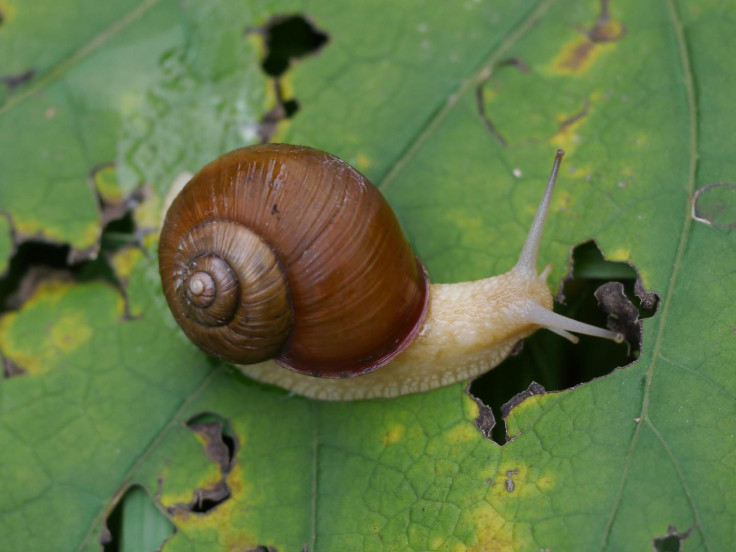These snails don't hide when they're scared – they whack predators with their shell instead
The snails use their shells as clubs to bat off beetles.
Unusually aggressive snail behaviour has been observed in Japan and the far east of Russia - two species have been found that don't retreat into their shell when they sense a predator, but instead swing their shell at it vigorously until it goes away.
The snails swung into action when approached by a predator, the carabid beetle. Two species – Karaftohelix (Ezohlix) gainesi and K selskii – would repeatedly swish their shells at the beetle when they were threatened, according to a study published in the journal Scientific Reports.
Such bold behaviour is rare in snails, the authors note. Similar behaviour has only been noted previously in the Japanese bradybaenid land snail, Acusta despecta, which swing their shells when attacked by firefly larvae.
Many closely related species would withdraw their soft bodies into their shells when the predator appeared. A couple of snails observed employed a different tactic and secreted bubbles around their body to protect themselves from the beetle, the authors say.
"The passive defence snails use their shell as a 'shield' to defend their soft body from the predator's attack, whereas the active defence snails use their shell as a 'club' to hit the predators and knock them over," the authors write in the study.

The alternative defence strategies of the closely related snails are thought to have evolved independently on the Japanese islands and on mainland Russia, the authors say. Genetic analysis suggests that adaptations to fend of predators is driving diversity among the snails.
"The difference in their defensive behaviours is also reflected in their shell morphology, indicating that their behaviours and shell shapes are interrelated to optimise the preferred defence strategy," says study coauthor Yuta Morii of Hokkaido University, Japan.
"Our study showcases the importance of predator-prey interactions along with resource competition as major selective forces affecting the evolution of morphological and behavioural traits in organisms," Morii says.
© Copyright IBTimes 2024. All rights reserved.







